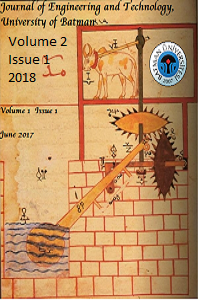Abstract
Increasing energy prices,
exponentially growing power need and detrimental effects of conventional fossil
fuel consumption has lead scientists and engineers to find alternative and
clean ways of energy production. Hydropower is one of the clean and renewable
energy extraction methods providing very high potential of energy with considerably
high predictability. Conventional hydroelectric plants (HEPP) are quite old technique
of energy production covering about one fifth of electricity need of the world.
Hydroelectric energy is site specific and most of the suitable locations for
HEPPs are already exploited. Also the conventional technology have high amount
of civil works together with serious environmental impacts. In this study, both
conventional and alternative hydropower production methods were reviewed with
special emphasize on modern technology and processes. Run-of-river hydropower
production schemes, tidal energy and other in-stream energy conversion systems,
wave energy technologies, ocean thermal and osmotic power stations were
analyzed. The methodology and device mechanisms were investigated.
Keywords
References
- Bahaj AS. (2011). Generating electricity from the oceans. Renewable Sustainable Energy Reviews, Vol. 15, pp. 3399–416.
- Bilotta GS, Burnside NG, Gray JC, Orr HG. (2016). The effects of run-of-river hydroelectric power schemes on fish community composition in temprete streams and rivers. Public Library of Science One. 2016;11(5).
- Cey E, Goodfellow L, Hanania J, Stenhouse k, Donev J. Run-of-the-river systems. (2017) Web page. University of Calgary. Available at: http://energyeducation.ca/encyclopedia/Run-of-the-river_systems
- Cruden, G. (2005). Energy alternatives. Thomson Gale.
- Gorlov, A.M. Tidal Energy, Academic Press, Boston, 2001.
- IRENA (International Renewable Energy Agency). (2014). Ocean thermal energy conversion technology brief. Available at: www.irena.org.
- Muratoglu A. (2011). Assessment of Tigris River hydropower potential. M.Sc. thesis. University of Gaziantep. Muratoglu A, Yuce MI, (2016). Advances in hydropower production: marine energy conversion. 12th International Congress on Advances in Civil Engineering (ACE 2016). 21-23 September 2016, Istanbul, TURKEY.
- NRC (Natural Resources Canada). (2004), Micro hydropower systems. A buyer's guide.
- Quaschning, V. (2010). Renewable energy and climate change. (Hedy Jourdan, Trans.) Berlin University of Applied Systems HTV, Germany: Wiley
- Rourke F., Boyle F. and Reynolds A, Tidal energy update 2009, Applied Energy, 87 (2), 2010.
- Schlager N. and Weisblatt J. (2006). Alternative energy. Vol.3. Thomson Gale
- Toossi, R., (2009). Energy and the environment. Los Angeles, CA: VerVe Publishers
- Wave Dragon. (2016). Available at: http://www.wavedragon.net/index.php?option=com_content&task=view&id=6
- WEC (World Energy Council), 2016. World Energy Resources, Hydropower 2016.
- Yuce MI, Muratoglu A. (2015). Hydrokinetic energy conversion systems: A technology status review. Renewable and Sustainable Energy Reviews; 43, 72–82. Doi: 10.1016/j.rser.2014.10.037
- Yuksek O., Komurcu, M.I., Yuksel, I., and Kaygusuz, K., (2006). The role of hydropower in meeting Turkey's electricity demand. Energy Policy, 34, 3093-3103
Abstract
References
- Bahaj AS. (2011). Generating electricity from the oceans. Renewable Sustainable Energy Reviews, Vol. 15, pp. 3399–416.
- Bilotta GS, Burnside NG, Gray JC, Orr HG. (2016). The effects of run-of-river hydroelectric power schemes on fish community composition in temprete streams and rivers. Public Library of Science One. 2016;11(5).
- Cey E, Goodfellow L, Hanania J, Stenhouse k, Donev J. Run-of-the-river systems. (2017) Web page. University of Calgary. Available at: http://energyeducation.ca/encyclopedia/Run-of-the-river_systems
- Cruden, G. (2005). Energy alternatives. Thomson Gale.
- Gorlov, A.M. Tidal Energy, Academic Press, Boston, 2001.
- IRENA (International Renewable Energy Agency). (2014). Ocean thermal energy conversion technology brief. Available at: www.irena.org.
- Muratoglu A. (2011). Assessment of Tigris River hydropower potential. M.Sc. thesis. University of Gaziantep. Muratoglu A, Yuce MI, (2016). Advances in hydropower production: marine energy conversion. 12th International Congress on Advances in Civil Engineering (ACE 2016). 21-23 September 2016, Istanbul, TURKEY.
- NRC (Natural Resources Canada). (2004), Micro hydropower systems. A buyer's guide.
- Quaschning, V. (2010). Renewable energy and climate change. (Hedy Jourdan, Trans.) Berlin University of Applied Systems HTV, Germany: Wiley
- Rourke F., Boyle F. and Reynolds A, Tidal energy update 2009, Applied Energy, 87 (2), 2010.
- Schlager N. and Weisblatt J. (2006). Alternative energy. Vol.3. Thomson Gale
- Toossi, R., (2009). Energy and the environment. Los Angeles, CA: VerVe Publishers
- Wave Dragon. (2016). Available at: http://www.wavedragon.net/index.php?option=com_content&task=view&id=6
- WEC (World Energy Council), 2016. World Energy Resources, Hydropower 2016.
- Yuce MI, Muratoglu A. (2015). Hydrokinetic energy conversion systems: A technology status review. Renewable and Sustainable Energy Reviews; 43, 72–82. Doi: 10.1016/j.rser.2014.10.037
- Yuksek O., Komurcu, M.I., Yuksel, I., and Kaygusuz, K., (2006). The role of hydropower in meeting Turkey's electricity demand. Energy Policy, 34, 3093-3103
Details
| Primary Language | English |
|---|---|
| Subjects | Engineering |
| Journal Section | Articles |
| Authors | |
| Publication Date | June 30, 2018 |
| Published in Issue | Year 2018 Volume: 2 Issue: 1 |


